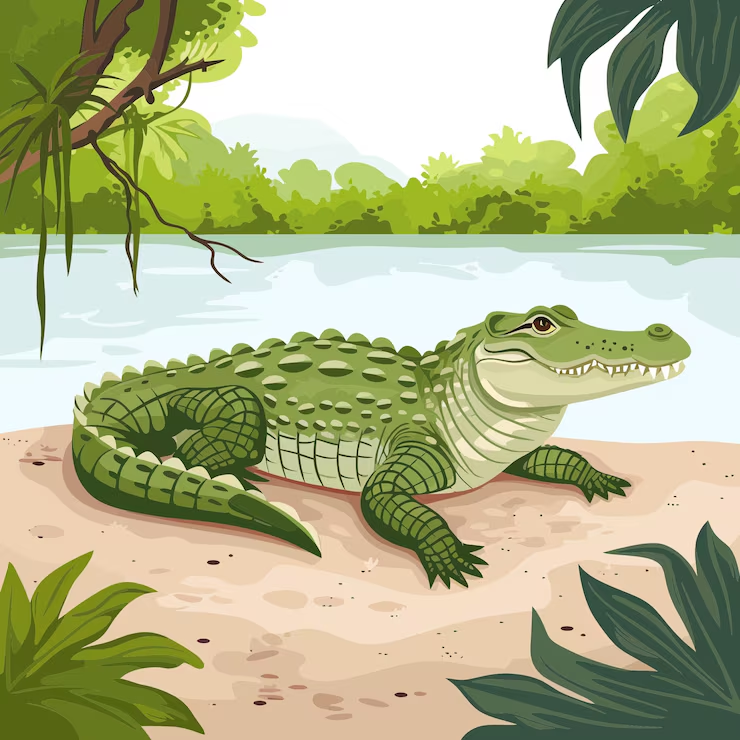Answers For [YP Collect] - An Overview of African Clawed Frog
Answers and detail explain for [YP Collect] - An Overview of African Clawed Frog
1.
smooth
2.
protection
3.
half
4.
still
5.
salt
6.
mud
7.
smell
8.
pump
9.
pest
10.
antibiotic | anti-biotic
Explain
[YP Collect] - An Overview of African Clawed Frog

0:00
0:00
Lecturer: Today, I'd like to look at another type of amphibian, the African clawed frog, whose Latin name is Xenopus levus. Its name is derived from the three short claws on each hind foot, which it uses to tear apart its food. The Latin word Xenopus means strange foot, and levus means smooth. I'll start with a general description. The African clawed frog is a species of frog that can be commonly found in the Eastern and Southern parts of Africa.
They have a flattened head and body but no tongue or external ears. 1As the Latin name suggests, African clawed frogs have smooth skin, unlike the toad whose skin always has a rough texture. 2The body of African frogs is covered with mucus, which can give their sensitive skin protection, thus playing an indispensable role in their survival. Male and female African clawed frogs can be easily distinguished through several characteristics, and the major one is their size. 3Generally, male frogs are about half as big as females.
Specifically, female frogs are usually 4.5 inches long, weighing around seven ounces, while males are generally 2.5 inches long and two ounces heavy. Then let's turn to their habitats. African clawed frogs are entirely aquatic frogs, so they live in water all their life, whether they are tadpoles or adult frogs. Although they can live in a wide range of freshwater environments, 4they particularly like still water instead of fast flowing streams. During the summer, African clawed frogs are mainly found in warm rivers, and during the rainy season, they tend to move into flooded forests.
In the wild, African clawed frogs are highly adaptable to changes in the environment around them, whether in oases or glacier covered lakes. 5Besides, they can even survive in water with high salt levels. It is because African clawed frogs have a unique physiological mechanism in their body that could automatically regulate the balance of water inside and outside their body. 6In dry weather, African clawed frogs always burrow themselves into mud where they can survive for more than a year. They are incredibly hardy and long lived with an average lifespan of five to fifteen years.
Some are even recorded to have lived for twenty to twenty five years. However, African clawed frogs are susceptible to the pollution of the water even though they are not listed as endangered species.
Lecturer: Now let's talk about the diet of African clawed frogs. They are carnivores that like hunting insects, spiders, worms, fish, etcetera. 7African clawed frogs depend on the sense of smell to detect their prey.
They first use the claws on their hind feet to tear pieces of ample food. Then the front feet, which are not webbed, play an important role in feeding. 8African clawed frogs use their front feet to push food into their mouths, and meanwhile, a distinctive pump system is used to draw or suck food in their mouths. So we can see African clawed frogs are voracious predators and can quickly adapt to many habitats. Therefore, in some parts of the world, African clawed frogs act like invasive species, which will negatively affect other species in the freshwater ecosystems.
The evidence shows that they have devastated the populations of native frogs and other creatures by eating their young. 9As a result, African clawed frogs are illegal to own, transport, or sell without any permit in some states of America, like California, Washington, Arizona, etcetera, where African clawed frogs have been seen as a type of pest. However, it's legal to own African clawed frogs in Canada. But not many people know that African clawed frogs are also used in medicine. 10As we mentioned before, the skin of African clawed frogs is covered with mucus, which has properties of antibiotic.
This chemical can help kill bacteria and cure the infection and is widely used by both the medical profession and the general public. So we shouldn't ignore the medical value of African clawed frogs.
Questions 1-10
Complete the notes below. Write ONE WORD ONLY for each answer.
African Clawed Frog (Xenopus Laevis)Description:
Habitats:
Diet:
Other information:
|
![[Forecast Q2-2025] - Biology lecture](https://static.helik.app/reading/8fd3d7d2-ccf9-47a3-8920-2e7a3b0d6607)
![[Forecast Q2-2025] - Living in the City](https://static.helik.app/reading/1a60bcf3-f3a7-4e9b-97a2-94d156a0de3b)
![[Forecast Q2-2025] - Student Union](https://static.helik.app/reading/fb443123-8c1d-447e-8c79-5a01650f4754)
![[Forecast Q2-2025] - Fruit-picking Job in an Orchard](https://static.helik.app/reading/e1968346-6c55-44ae-b8d3-f6a4fb7207b9)
![[Forecast Q2-2025] - University Crime Prevention](https://static.helik.app/reading/bdda593e-16d6-4c72-8a12-b116e917b27c)
![[Forecast Q2-2025] - Business Course](https://static.helik.app/reading/3308e282-99a6-4bcb-9d22-0b488701d968)
![[C20T1] - Choosing a restaurant](https://static.helik.app/reading/e9b21123-c43c-42fb-88b7-5d0be3a37e03)
